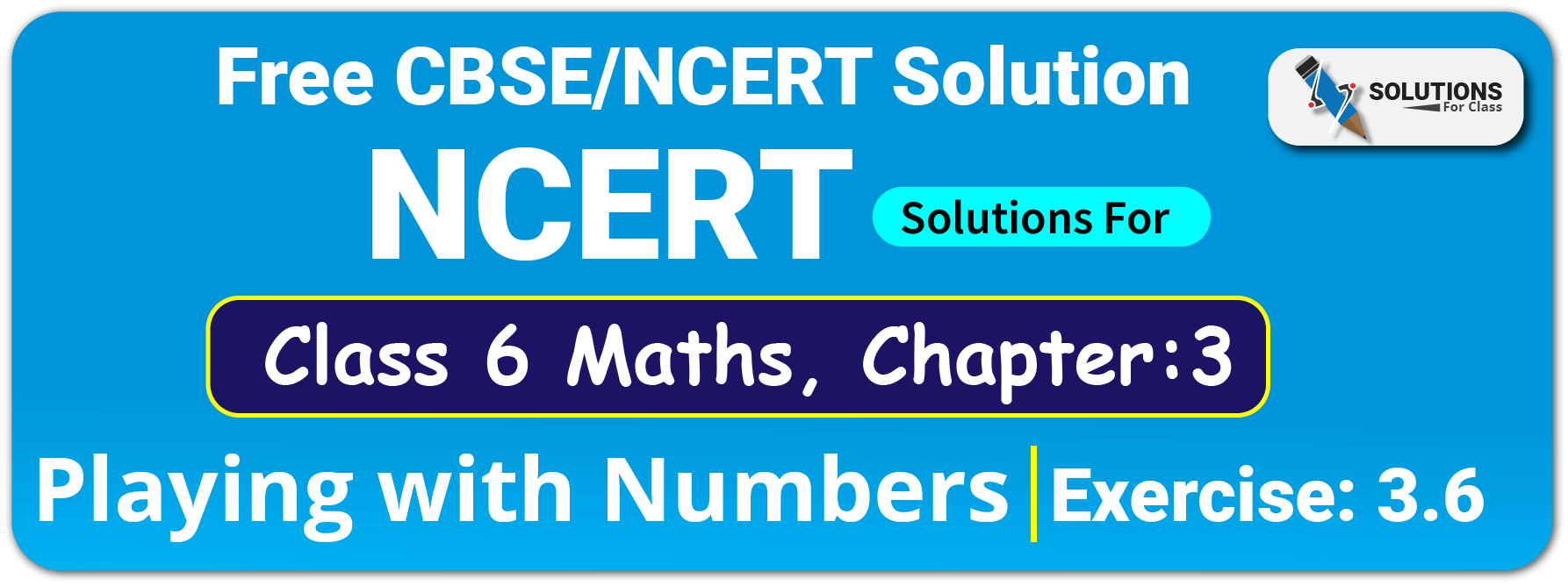
Table of Contents
ToggleClass 6, Maths, Chapter 3, Exercise 3.6 Solutions
Q.1. Find the HCF of the following numbers :
(a) 18, 48
(b) 30, 42
(c) 18, 60
(d) 27, 63
(e) 36, 84
(f) 34, 102
(g) 70, 105, 175
(h) 91, 112, 49
(i) 18, 54, 81
(j) 12, 45, 75
Ans:
The Highest Common Factor (HCF) of two or more given numbers is the highest (or greatest) of their common factors
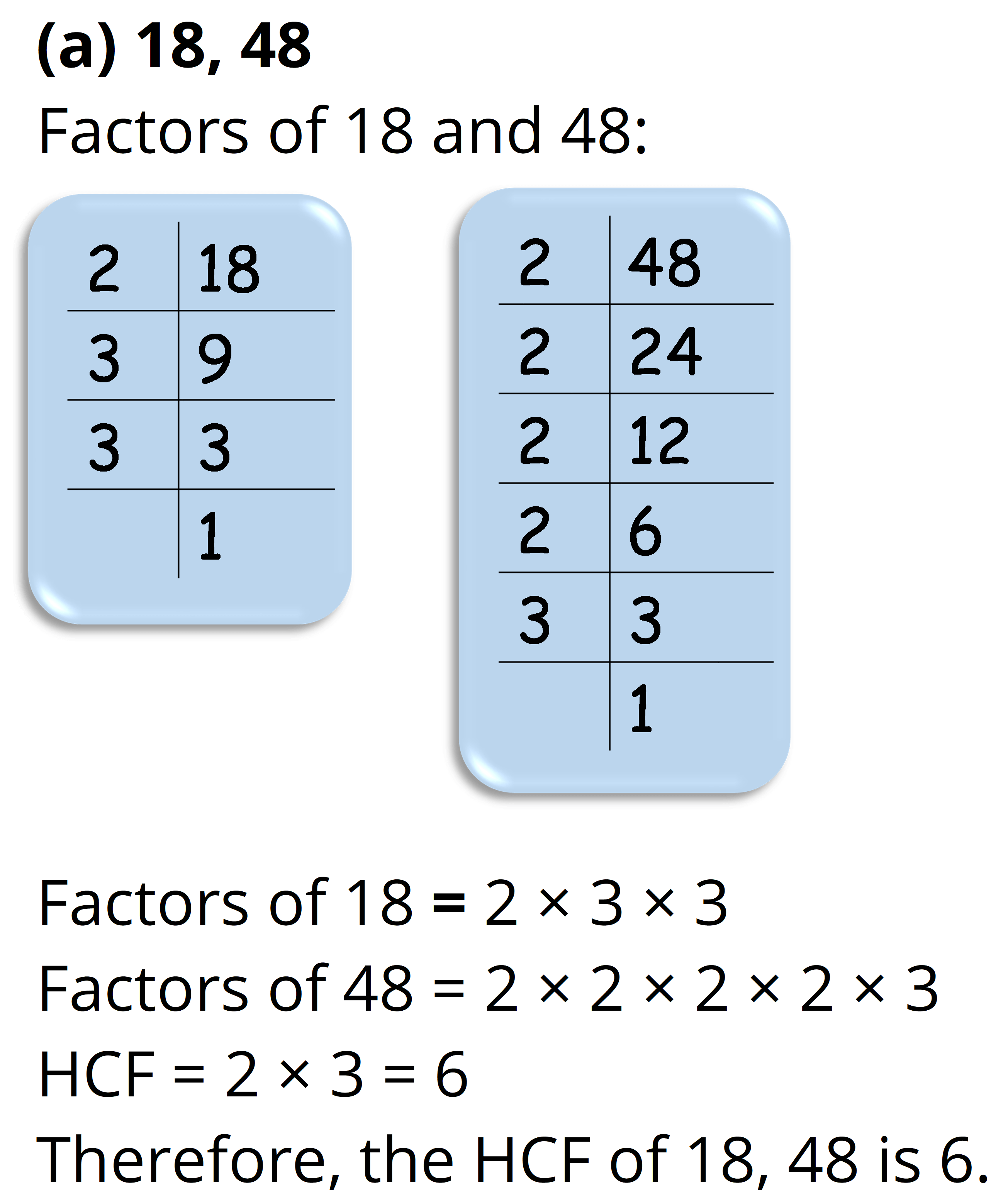
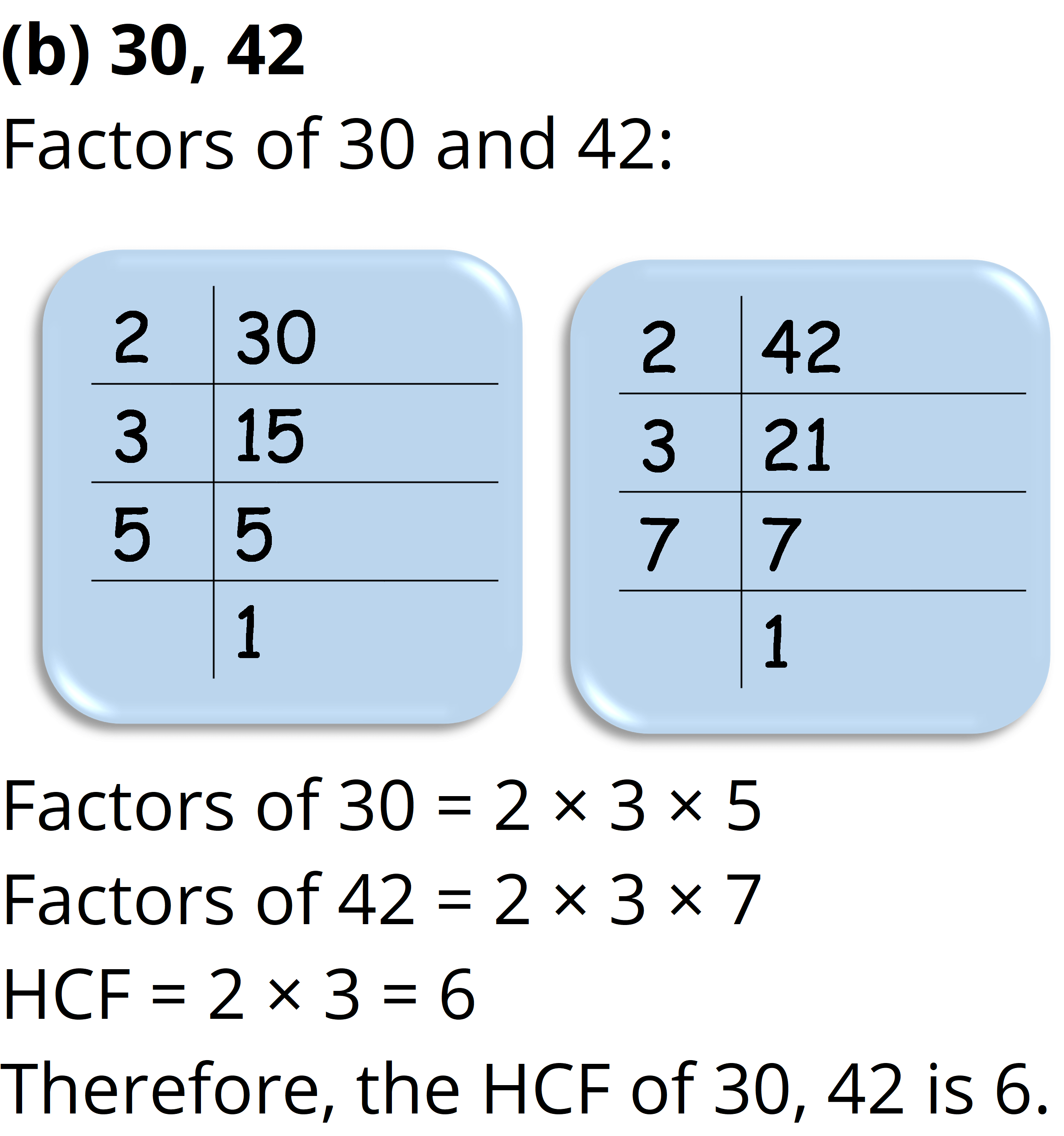

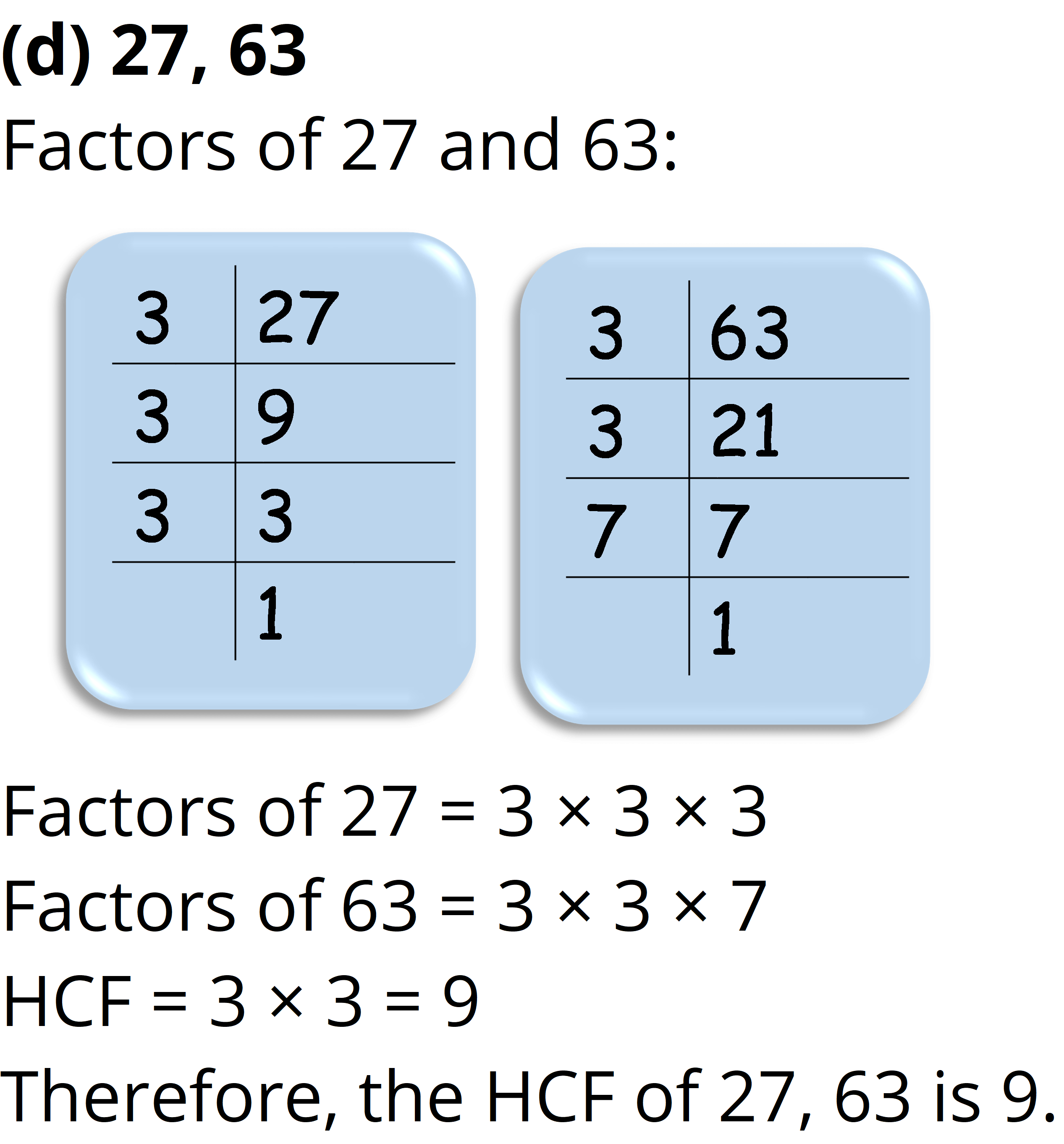
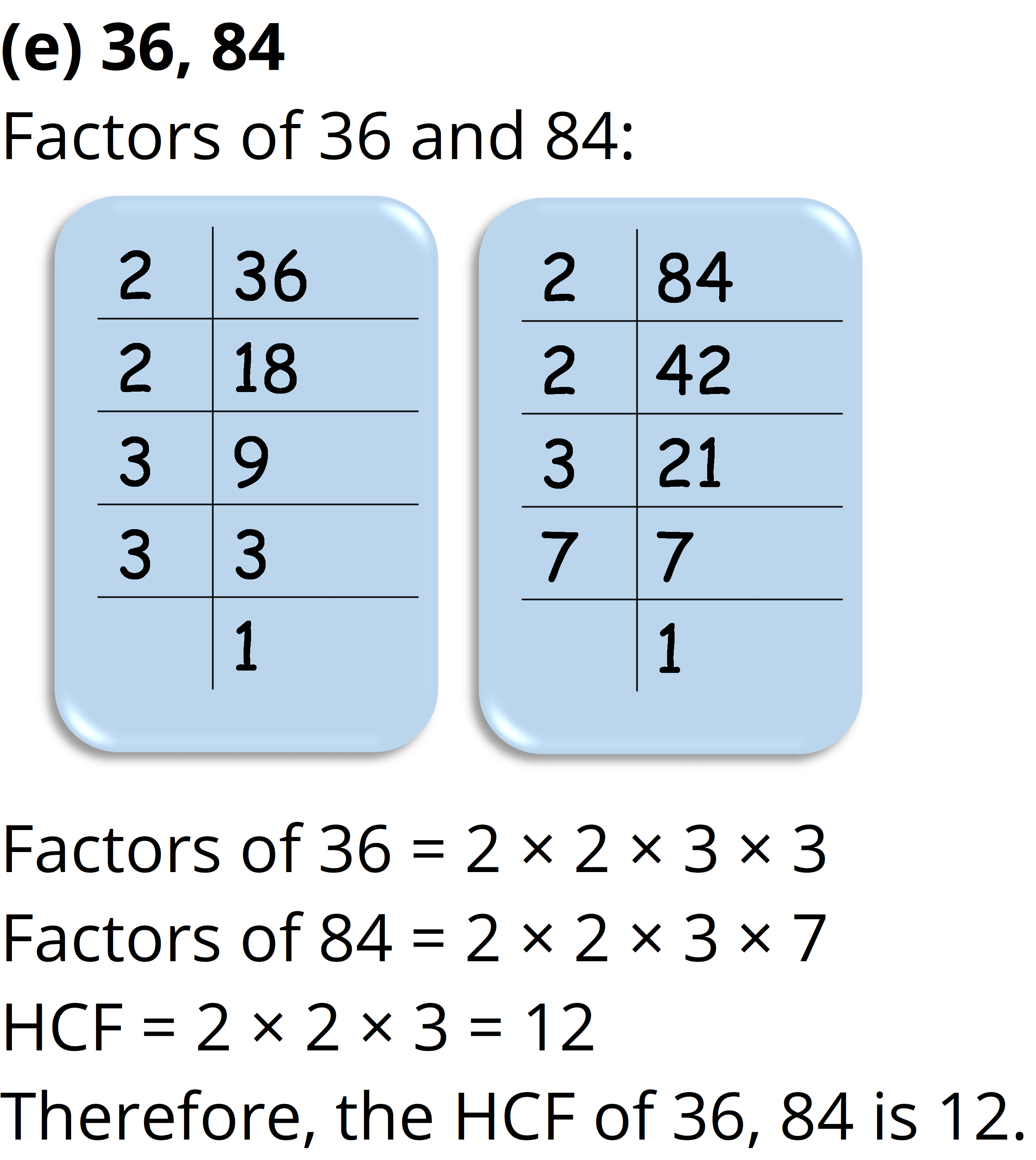
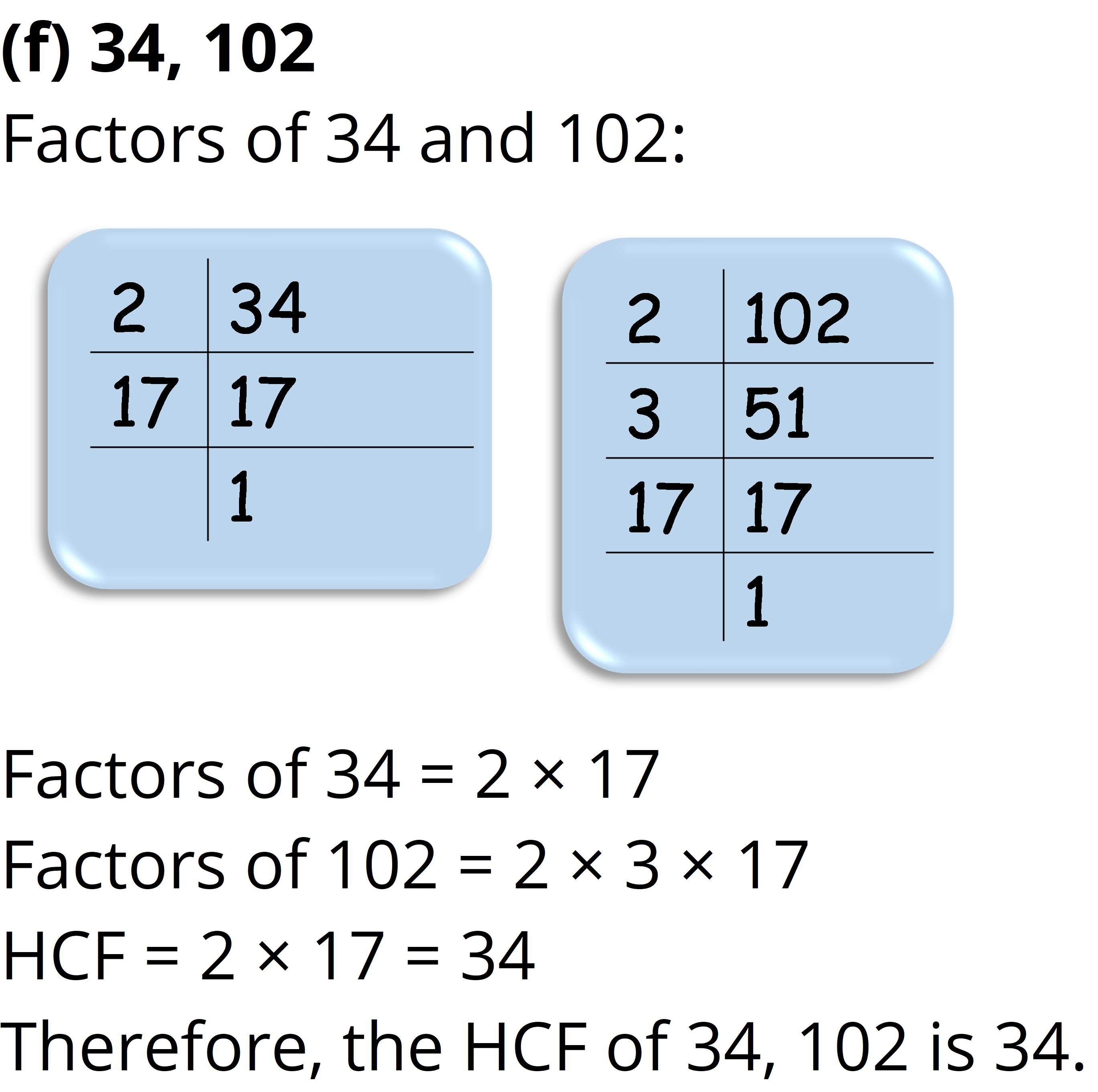
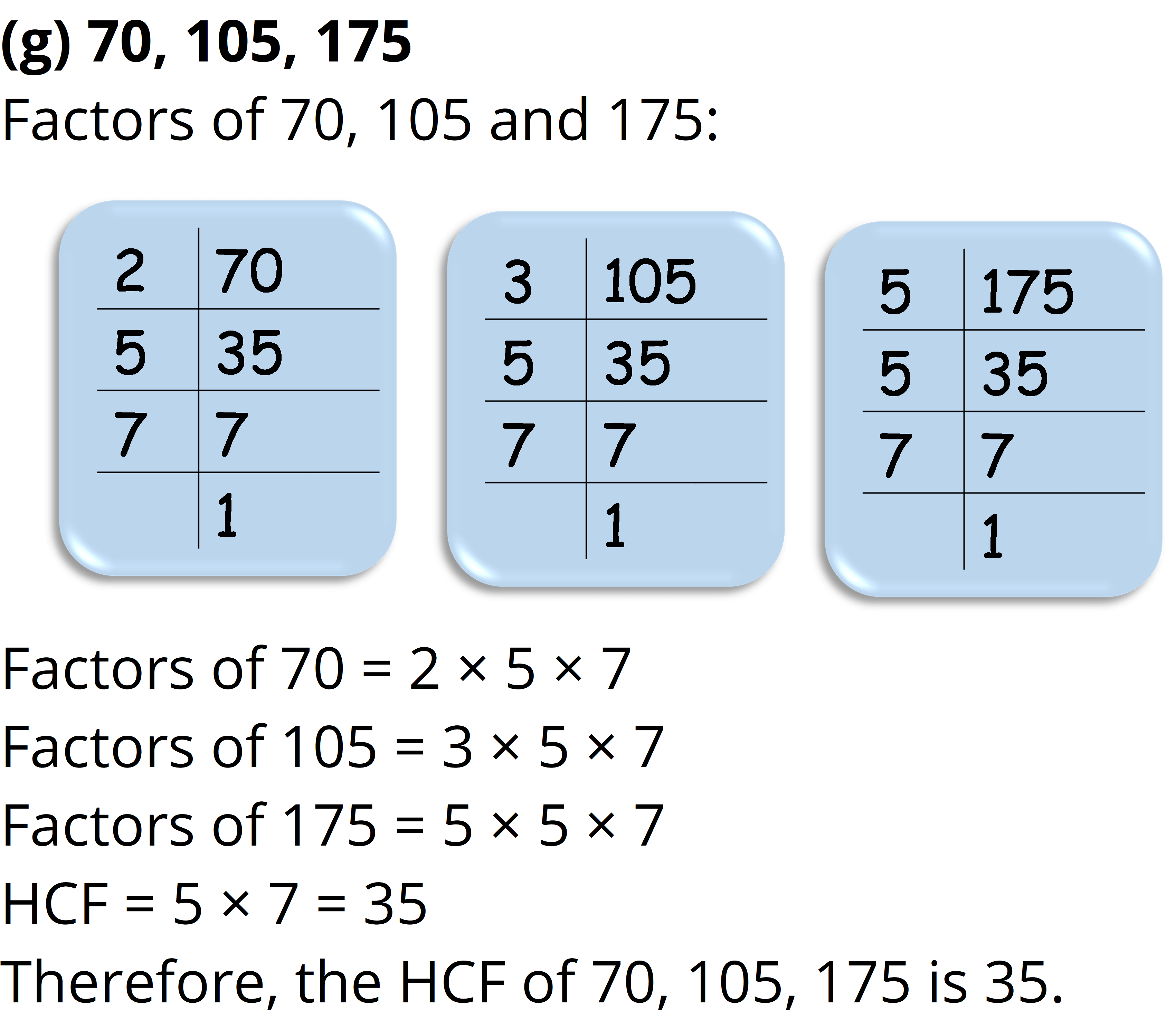
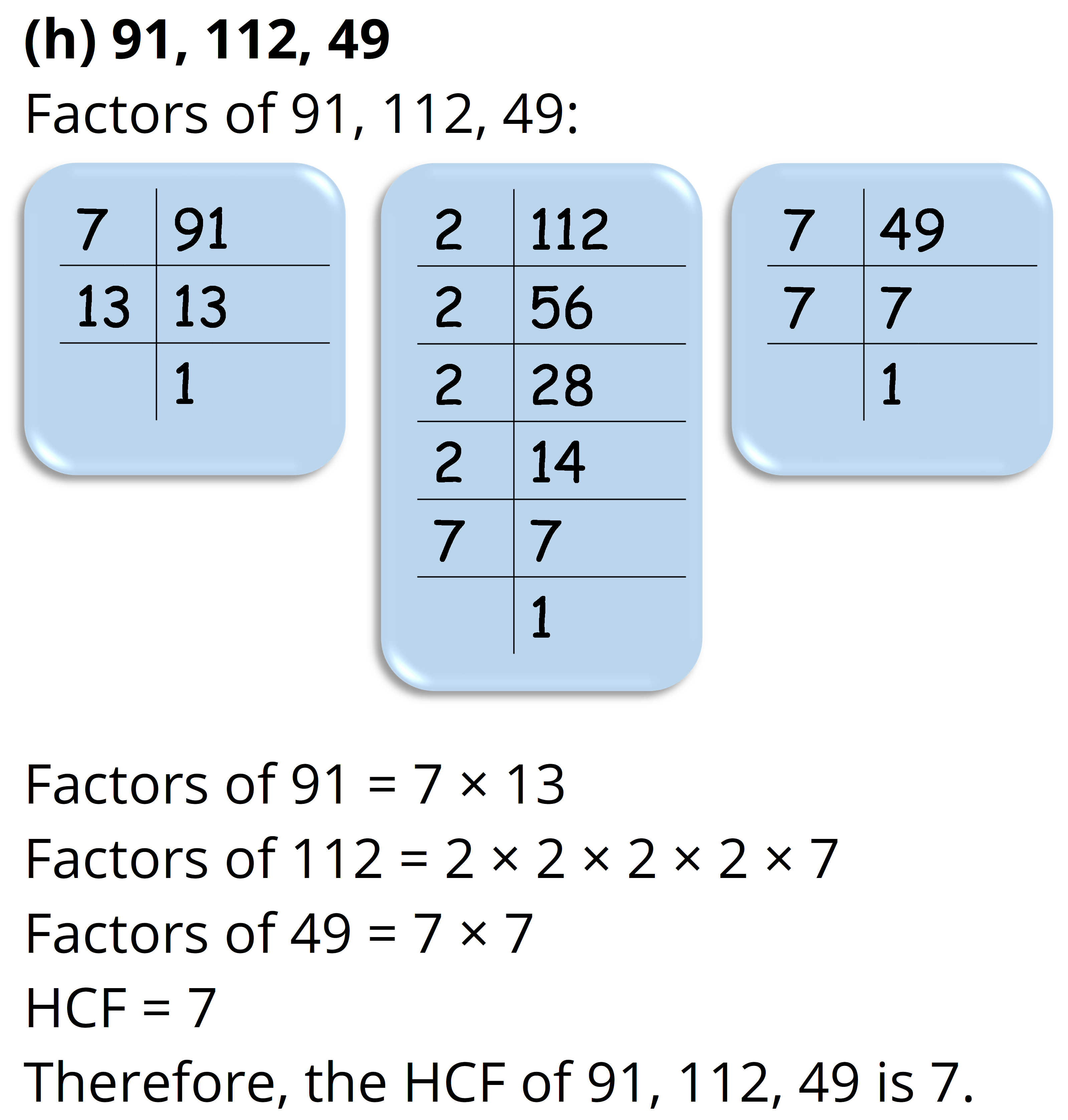
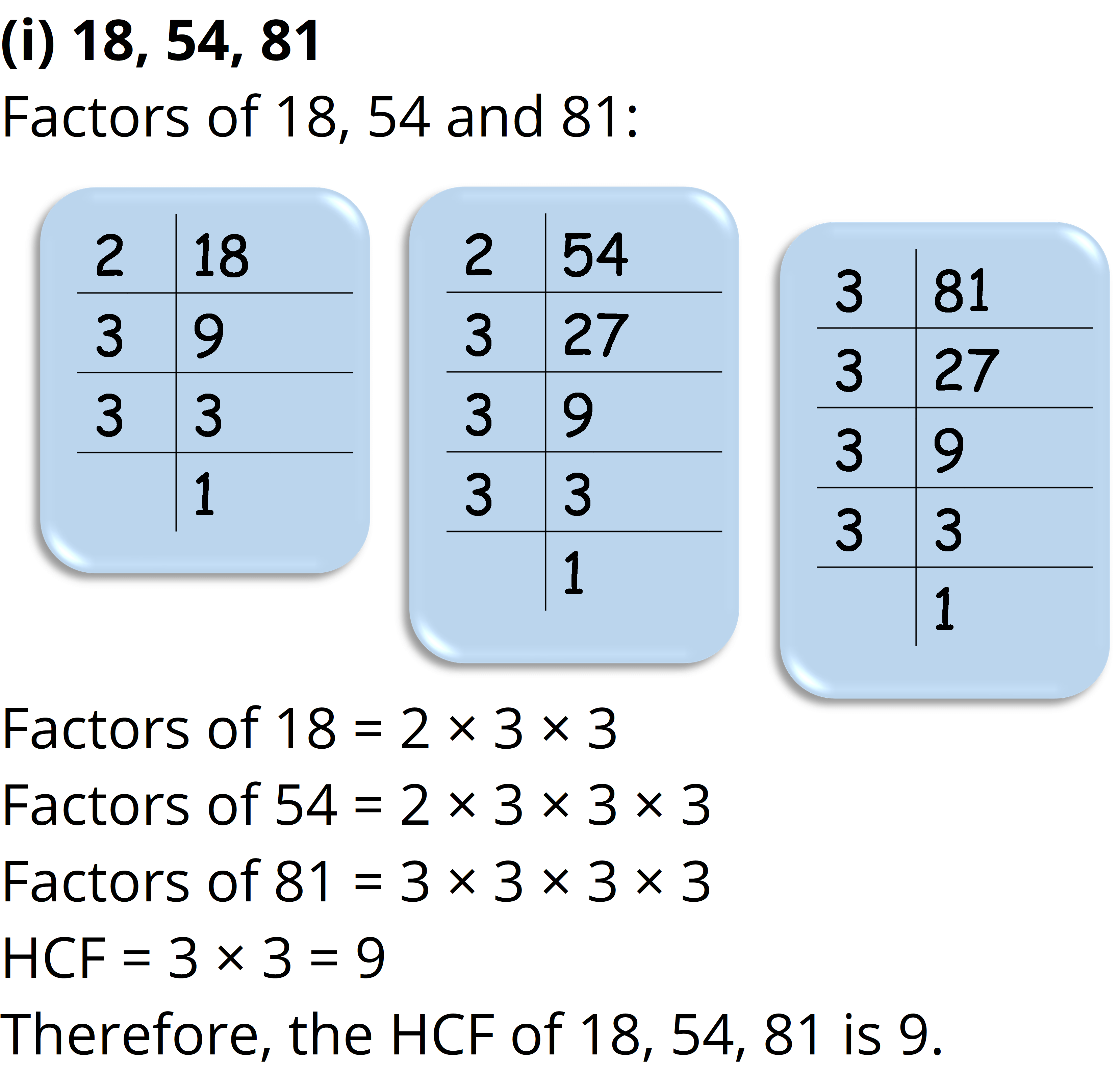
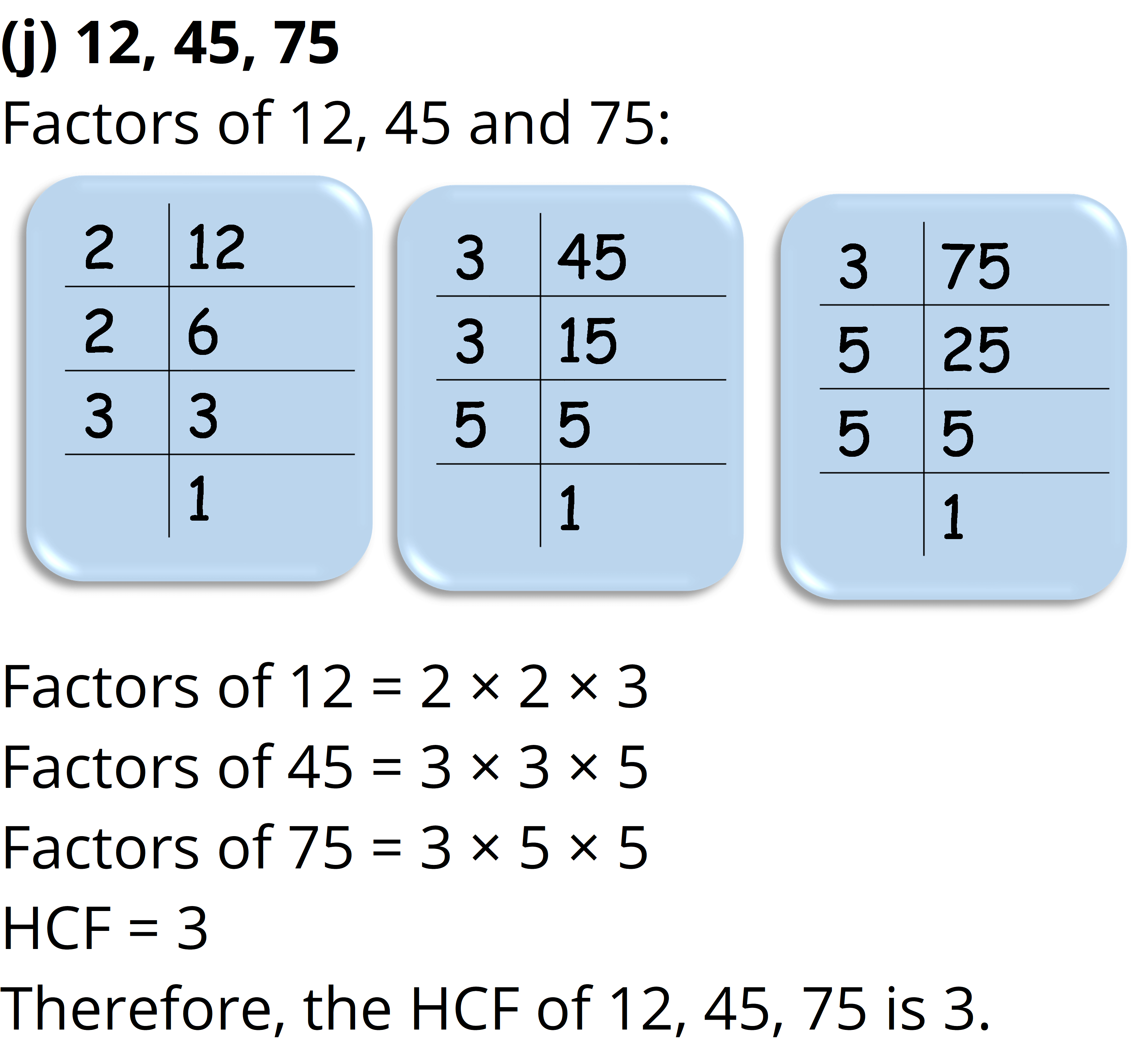
Q.2. What is the HCF of two consecutives
(a) numbers?
(b) even numbers?
(c) odd numbers?
Ans:
(a) The HCF of two consecutive numbers is 1
Example(i): The HCF of 2 (2=1×2) and 3 (3 = 1×3) is 1.
Example(ii): The HCF of 15 (15 = 1 x 3 x 5) and 16 (16 = 1x2x2x2x2) is 1.
(b) The HCF of two consecutive even numbers is 2
Examples:
(a) HCF of 2 (2= 1×2) and 4 (4= 1x 2 x 2) is 2.
(b) HCF of 6 (6 = 1×2 x 3) and 8 (8 = 1 x 2 x 2 x 2) is 2
(c) The HCF of two consecutive odd numbers is 1
Example: The HCF of 3 (3 = 1×3) and 5 (1×5) is 1
Q.3. HCF of co-prime numbers 4 and 15 was found as follows by factorisation: 4 = 2 × 2 and 15 = 3 × 5 since there is no common prime factor, so HCF of 4 and 15 is 0. Is the answer correct? If not, what is the correct HCF?
Ans:
No, the answer is not correct. The correct HCF (Highest Common Factor) of co-prime numbers 4 and 15 is 1.
Co-prime numbers are two numbers that do not have any common factor except 1.
In this case,
Prime factors of 4 = 2 x 2,
Prime factors of 15 = 3 x5.
As there is no common prime factor between them, the HCF of 4 and 15 is 1.
So, the correct answer is HCF (4, 15) = 1.
NCERT Solutions For Class 6 Maths, Chapter 3 Playing With Numbers (All Exercises)
Class 6, Maths, Chapter 3, Playing With Numbers
Class 6, Maths, Chapter 3, Playing With Numbers, Exercise 3.1
Class 6, Maths, Chapter 3, Playing With Numbers, Exercise 3.2
Class 6, Maths, Chapter 3, Playing With Numbers, Exercise 3.3
Class 6, Maths, Chapter 3, Playing With Numbers, Exercise 3.4
Class 6, Maths, Chapter 3, Playing With Numbers, Exercise 3.5
Class 6, Maths, Chapter 3, Playing With Numbers, Exercise 3.6 ← You are here
Class 6, Maths, Chapter 3, Playing With Numbers, Exercise 3.7

